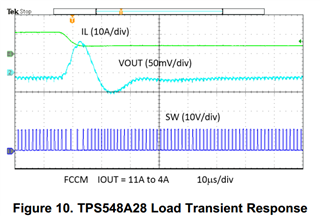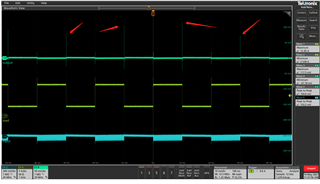Hi TI team
I buied a TPS548A28EVM and tested the transients load response, The testing reslut are different with those in the 2.6 chapter of the user's guide .
My testing load is same with the guide, 2A/us, 4A to 11A.Please see my test wavefrom.

The peak value is 124mv,and the EVM value doesn't exceed 80mv.

If I increase the time scale of scope, for get more tests at scope.The peak results of each test are not exactly the same at load decrease.

Could you help me to analysis?

